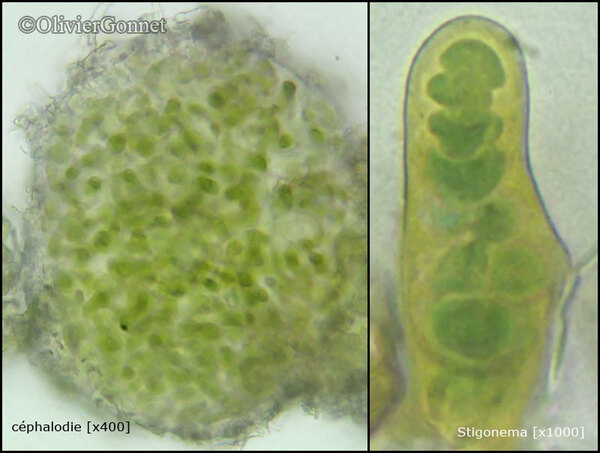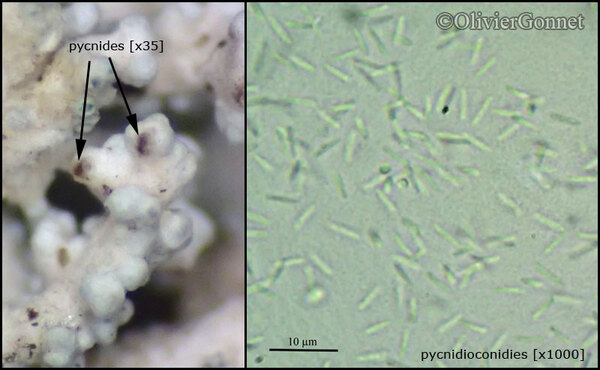Stereocaulon grande (H. Magn.) H. Magn
in Degelius, Ark. Bot. 25A, 1: 47, 1932.. Basionym: Stereocaulon paschale var. grande H. Magn. - in Zahlbr., Cat. Lich. Univ., 4: 657, 1927.
Synonyms:
Distribution:
Description: Primary thallus crustose, ephemeral, usually absent in mature individuals, secondary thallus fruticose. Pseudopodetia rigid, suberect, 4-8 cm high, up to 2.5 mm thick at base, progressively tapering to apices, with a few and short branches, the main axis dominant to the tip, covered in a pale pink tomentum, with a rather loose cartilaginous axis of parallel hyphae surrounded by a lax medulla. Phyllocladia forming globular clusters, crenate-squamulose to digitate-squamulose, 0.4-0.8 mm long, c. 0.2 mm wide (larger than those of S. paschale, more delicate and divided than those of S. alpinum). Cephalodia scarce and difficult to observe because embedded in the tomentum, sometimes absent, small, globulose, pale brown, sparsely tomentose, with Nostoc or Stigonema. Apothecia almost terminal, blackish brown, 1-2.5 mm across, at first flat and thinly marginate, then slightly convex and with reflexed margin. Proper exciple brown in outer part, colourless within; epithecium brown, K-; hymenium colourless, 50-60 µm high, I+ blue; paraphyses 1-1.5 µm thick at mid-level, the apical cells 4-5 µm wide, with a dark cap; hypothecium 40-50 µm high, I+ blue. Asci 8-spored, cylindrical-clavate, with a K/I+ blue outer layer and apical dome, and a central, K/I+ darker blue tube, Porpidia-type. Ascospores 3(-4)-septate, thicker at one end, hyaline, fusiform, often slightly curved, 20-45 x 2-3 µm. Pycnidia dark, half-immersed. Conidia 1-celled, hyaline, bacilliform, straight, 5-6 x 0.5-0.7 µm. Main photobiont chlorococcoid. Spot tests: K+ slowly yellow, C-, KC+ violet (reaction often difficult to observe macroscopically, best evident on acetone extract on filter paper!), P- or P+ slowly pale yellow, UV+ blue-white. Chemistry: atranorin and lobaric acid. Note: a species of alluvial soils, widespread in Europe from the boreal-montane to the subarctic-subalpine zone, but not common; from the Alps there are only some scattered records, but perhaps the species was not always distinguished; to be looked for in the Italian Alps.
Growth form: Fruticose
Substrata: soil, terricolous mosses, and plant debris
Photobiont: green algae other than Trentepohlia (primary); cyanobacteria, filamentous (e.g. Nostoc, Scytonema) (secundary, e.g. in cephalodia)
Reproductive strategy: mainly sexual
Commonnes-rarity: (info)
Alpine belt: absent
Subalpine belt: absent
Oromediterranean belt: absent
Montane belt: absent
Submediterranean belt: absent
Padanian area: absent
Humid submediterranean belt: absent
Humid mediterranean belt: absent
Dry mediterranean belt: absent
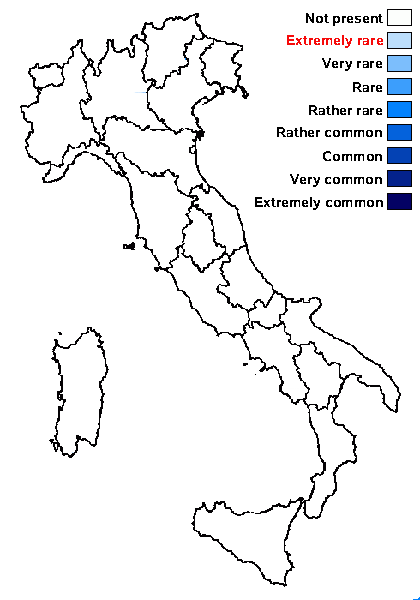
Predictive model
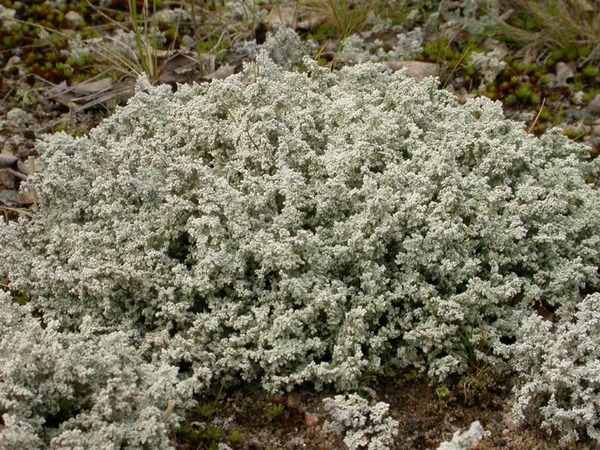
Einar Timdal. Source: http://www.nhm2.uio.no/botanisk/lav/Photo_Gallery/Stereocaulon/grande_G=Norway+Finnmark+Kautokeino_H=O-L123254_D=20030814_C=ET_I=1.jpg
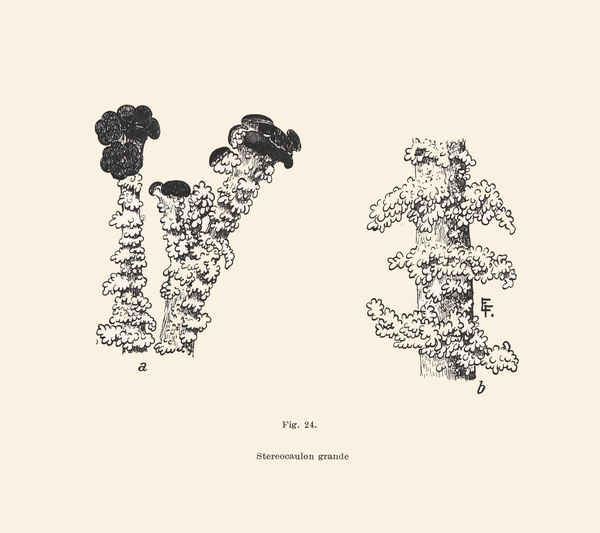
Frey E. 1933. Cladoniaceae (unter Ausschluß ded Gattung Cladonia) und Umbilicariaceae. In: Rabenhrst’s Kryptogamenflora von Deutschland, Österreich und der Schweiz. 15: 1-208.
Growth form: Fruticose
Substrata: soil, terricolous mosses, and plant debris
Photobiont: green algae other than Trentepohlia (primary); cyanobacteria, filamentous (e.g. Nostoc, Scytonema) (secundary, e.g. in cephalodia)
Reproductive strategy: mainly sexual
Commonnes-rarity: (info)
Alpine belt: absent
Subalpine belt: absent
Oromediterranean belt: absent
Montane belt: absent
Submediterranean belt: absent
Padanian area: absent
Humid submediterranean belt: absent
Humid mediterranean belt: absent
Dry mediterranean belt: absent

Predictive model

Einar Timdal. Source: http://www.nhm2.uio.no/botanisk/lav/Photo_Gallery/Stereocaulon/grande_G=Norway+Finnmark+Kautokeino_H=O-L123254_D=20030814_C=ET_I=1.jpg

 INDEX FUNGORUM
INDEX FUNGORUM
 GBIF
GBIF
